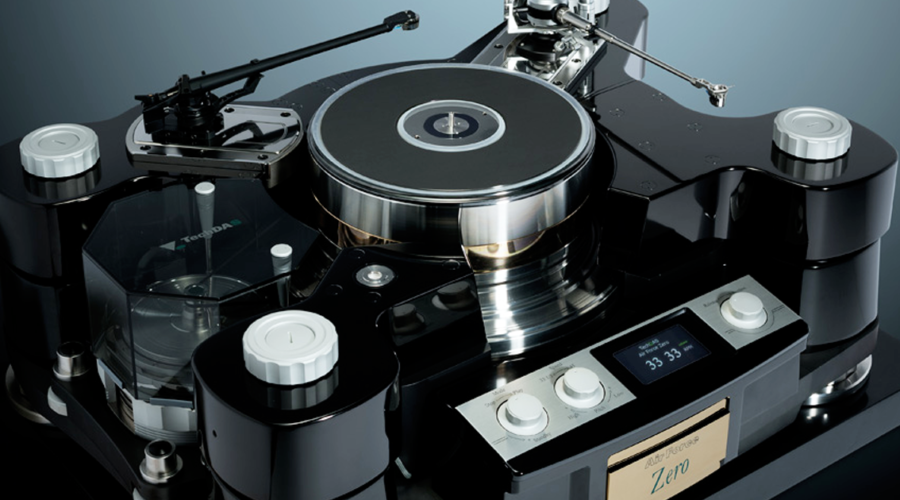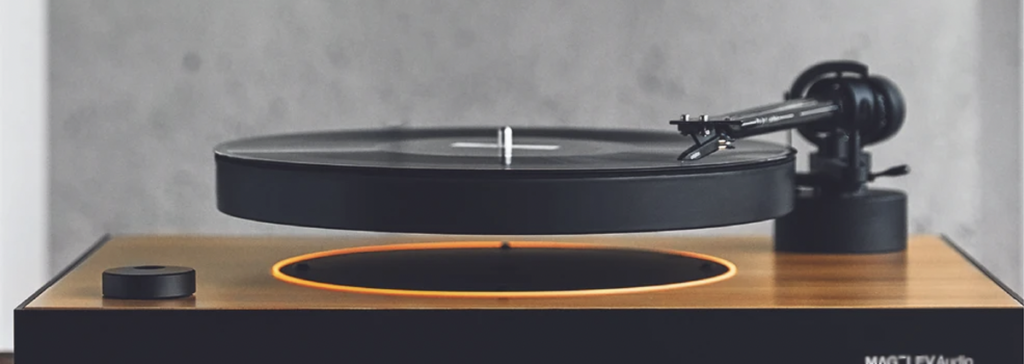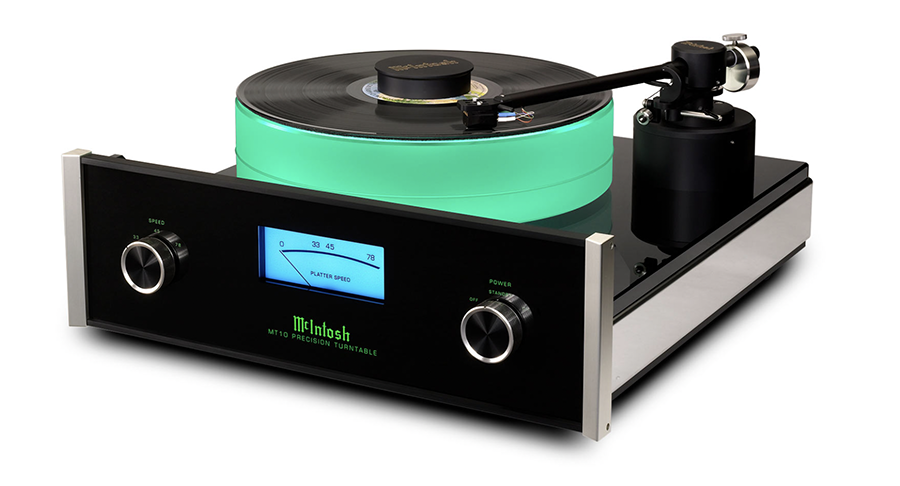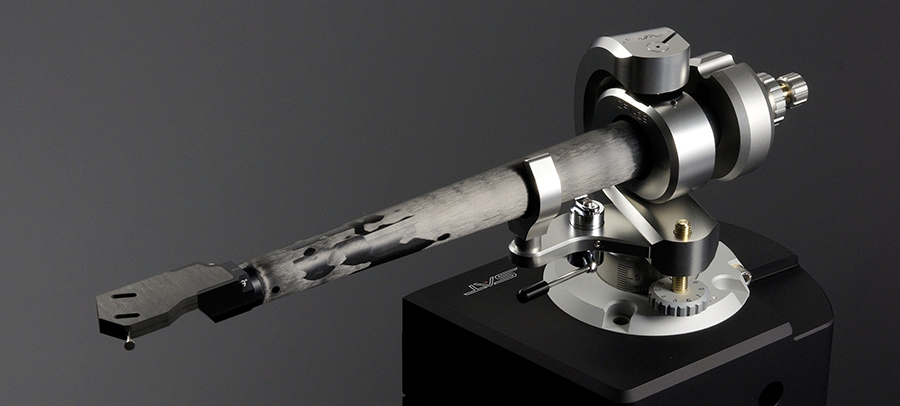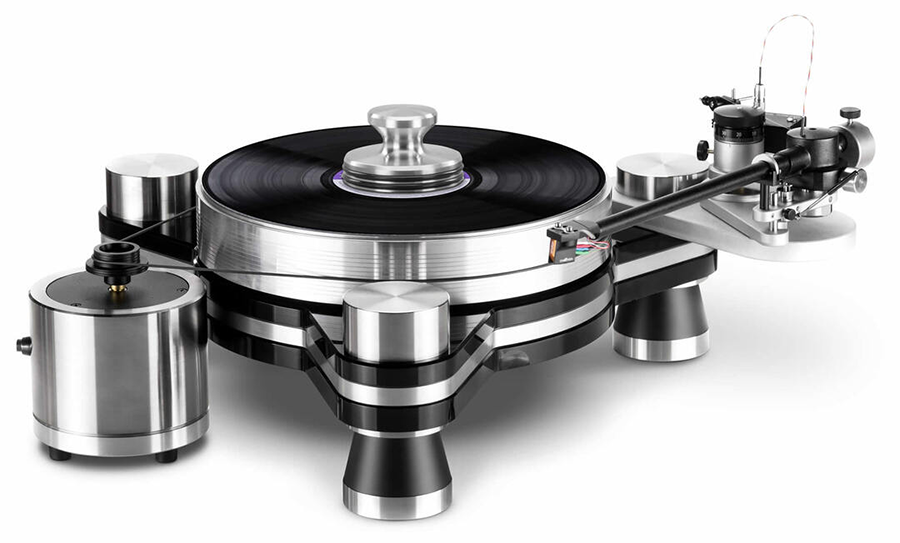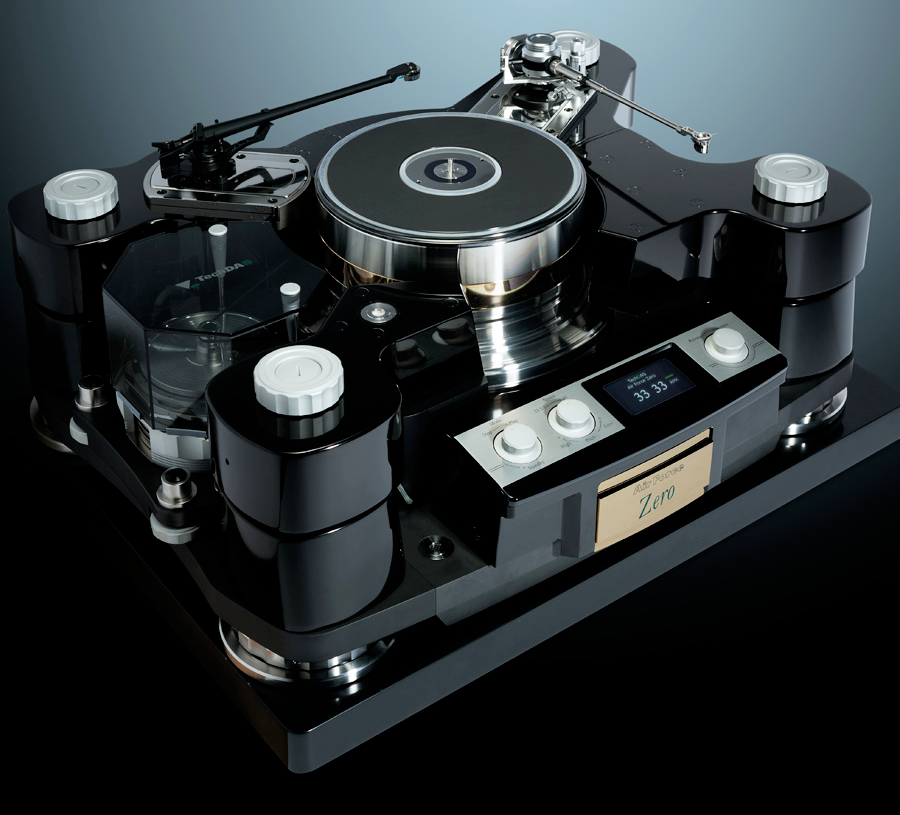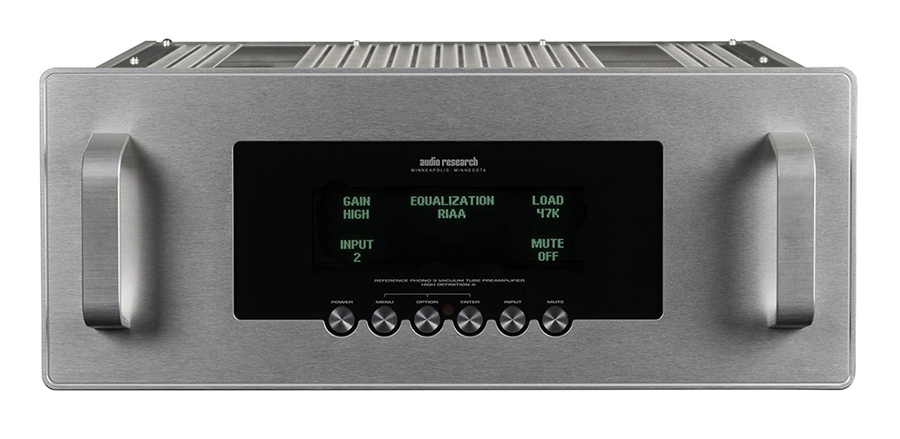Luxury Turntables–An Introduction
No other aspect of premium home entertainment offers as many exquisite options or as many points of entry, from basic to baroque
by Frank Doris
updated December 21, 2021
With the resurgence of all things vinyl, there’s arguably never been a better time to add a high-end turntable to a home entertainment setup.
A what?
Audiophiles like me take this for granted, but most people don’t even realize luxury turntables exist. But what makes a turntable luxury? Well, if it’s defined not just by price but by the ability to deliver a compelling musical experience, the best record-playback systems sound remarkably realistic, blurring the line between “reproduced sound” and the feeling the musicians are right in front of you.
A fine turntable can also be strikingly beautiful, whether a minimalist design like the classic Linn Sondek LP-12 or the clockwork-tech visuals of the VPI Avenger Reference.
If you think of audiophiles as a bunch of tweak-crazy perfectionists—assuming you’ve ever bothered to think of them at all—well, in some cases you’d be right. (Certainly in my case!) But don’t let the thought that a turntable isn’t a simple plug & play purchase scare you away from buying and enjoying one of these gorgeous pieces of machinery.
But there’s one thing I need to emphasize before we proceed: A high-end turntable will require setup.
If you don’t know, or don’t want to know, the tricks of the trade, you can enlist the help of a dealer, systems integrator, or turntable setup specialist (yes, there are people like that). Their advice (and that of expert reviewers) on which turntable to buy will also be invaluable. While setup is exacting, it’s not a black art, so if you want to learn how to do it yourself, I would recommend Michael Fremer’s turntable setup DVD.
Better turntables start at around a few hundred dollars for a complete turntable/arm/cartridge setup, and spending from $500 to around $2,000 will bring immense musical satisfaction. But if you’re striving for the sonic ultimate, manufacturers like SME, Brinkmann, Spiral Groove, Rega, and Technics offer models from four and five figures up to turntables like the mighty $440,000, 780-plus-pound TechDAS Air Force Zero, and beyond. The TechDAS features five interlocking platters floating on a cushion of air, and a host of exotic proprietary materials, including a motor that’s no longer made.
Should you decide to invest in such a dazzling device, you’ll need to add a tonearm and cartridge. (While there are plenty of excellent complete turntable setups on the market, for many high-end record-playback rigs, the turntable, tonearm, and cartridge must be chosen separately.)
There are ultra-refined tonearms from some of the manufacturers mentioned above, plus Swedish Analog Technologies (their $48,000 CF1-09 is a mind blower), Acoustic Signature, and Graham Engineering, among others, and dozens of superb phono cartridges from companies like Grado, Ortofon, Koetsu, Audio-Technica, Van den Hul, Kiseki, Lyra, and Soundsmith. The miniaturized works of these diamond-tipped marvels are made to the standards of fine watches.
To descend to another level of audiophile geekdom—and raise another topic you might want to hand off to an expert—you’ll also need a phono stage, which amplifies and equalizes the weak signals coming from the turntable to a level the rest of the audio system can handle. (In the days when turntables were everywhere, phono inputs were common—today, not so much.) While budget and some under-$1,000 turntables have a built-in phono stage, ultimate-performance phono rigs and outboard phono stages like the CH Precision P1 ($31,500) or the Audio Research Reference Phono 3 ($15,000) go together like Ferraris and Brembo brakes. (For an overview of what’s available check Stereophile’s “Recommended Components” or The Absolute Sound’s “Editors’ Choice” listings.)
Why is the best turntable gear expensive? Consider: A record groove is around 40 to 80 micrometers wide, while a human hair is 17 to 181 µm wide! When dealing with that kind of micro-level physics, things like stylus shape and cartridge and tonearm alignment become exacting concerns in accurately translating the minute wiggles of the stylus through the groove into electrical signals heard as music. On the macro level, the motor must spin the platter at an unwavering speed (or it’ll be heard as pitch variation) while adding no noise of its own, and the turntable should be immune from outside vibrations.
It all adds up to a delicate balancing act—literally—and the engineering involved could fill more than one book. There are a myriad of approaches to things like materials, cartridge designs (the most common are moving coil and moving magnet), tonearm geometries, motors, and noise isolation. (The Mag-Lev Audio ML1 turntable uses magnetic levitation for platter isolation!) Materials like titanium platters, high-precision bearings, and handmade phono cartridges don’t come cheap, especially when manufactured in small quantities. But when a manufacturer takes a cost-no-object approach, it provides the freedom to reach for the sonic ultimate.
So, what’s best for you? I asked Michael Trei, who is a reviewer for Sound & Vision and a turntable setup expert, what his well-to-do clients want most. Looks? Sound? Bragging rights? “Reliability is the most important thing,” he said. “My customers don’t want to deal with turntables going out of adjustment.”
He added that “arm handling is important.” There aren’t any high-end turntables with automatic operation (let alone remote control!), so you have to manually play your records, and take care in doing so. Because of that, you need to be comfortable with the “feel” of the arm. (Some SME models make it physically impossible to accidentally drop the tonearm.)
For the klutzes among us, Trei recommends using a moving-magnet cartridge, since the stylus on most can be easily replaced if damaged. If you have toddlers or others who might cause damage, keep the turntable—or them—out of reach! “I wish someone would make a locking turntable dustcover,” Trei mused.
On the other hand, as mentioned before, some audiophiles enjoy “tweaking” their setups. Some turntables are very stable; others require regular attention.
Is it all worth it? Consider me an enabler. A high-end turntable setup will convey music with astounding realism, resolution of musical detail, and a soundspace that can extend beyond the boundaries of your entertainment room or place you right in the audience. If you’ve never heard a high-end turntable at this level of performance, it will be a revelation.
If that’s not luxury for the soul, I don’t know what is.
Frank Doris is the editor of Copper, an online audio and music magazine. He has more than 30 years of experience in public relations and marketing communications and has written for a number of publications including Copper, Cineluxe, Sound & Vision, CE Pro, The Absolute Sound, Home Theater Review, and others. He is also a professional guitarist and yes, played at CBGB back in the day.
© 2023 Cineluxe LLC
